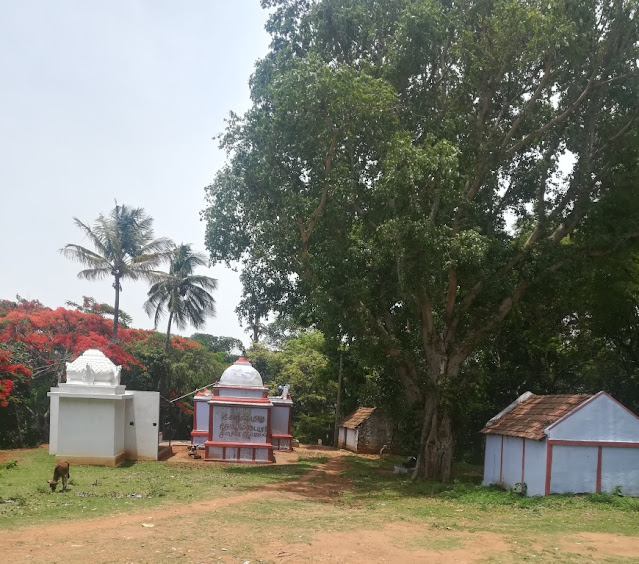Arapaleeswarar Temple, Kolli
Hills – Legends
Arapaleeswarar:
Once, a devotee caught the
fishes in the Panchanathi river and began to cook them for food. To his
astonishment, the fishes in the curry got their life back and jumped back to
the river. It is said that Lord Shiva joined the fishes together and gave them
their life back. Hence, he came to be called as Arapaleeswarar. It is a custom
here that the devotees feed the fishes in the river before entering the
temple. The tribals in the region join the devotees in celebrating
Adiperukku in their own traditional ways. They catch the fishes, bore their
nose and leave them back in the river again. The Adi Perukku is celebrated with
all gaiety on 17, 18 and 19 of Adi month (Jul-Aug).
Swayambhu Lingam:
As per legend, the
current temple site was agricultural land in ancient times. Once, a farmer
ploughed the land and noticed blood oozing out at particular spot. He excavated
the spot and found a Swayambhu Shiva Linga. The scar caused by the plough
injury is still visible on the head part of the Shiva Lingam.
Arai Palleeswarar:
Arai means Mountain in Tamil and
Palli means residence. As Lord Shiva took residence on mountain, he came to be
called as Arai Palleeswarar and later got corrupted to Arapaleeswarar.
Kolli Pavai:
As per legend, the devas chose Kolli
Malai as the perfect place for their meditation and penance. They decided
to perform a grand yagna and were making arrangements. Sages were helping devas
to conduct their Yaga. The asuras were worried about the yaga of devas. The
asuras felt that devas would become unconquerable if they conduct the yaga
successfully. The asuras started creating troubles to the devas and sages and
preventing them from doing the works related to Yaga.
Unable to overcome the
atrocities of the asuras, the devas prayed to Lord Shiva for his intervention
in annihilating the asuras. Lord Shiva deputed Vishwakarma, the divine
architect, to Kollimalai
to assist the devas and sages. He devised a plan to easily subdue the asuras.
Accordingly, he made a beautiful idol of a damsel near the place of the yaga. The
devas were astonished to see the idol.
When the asuras came to this
place with the intention of disturbing the yaga, they were mesmerized by
the beauty of the idol and went near to the idol without realizing the danger.
The asuras went near the idol were killed. It is said that this idol would
attract the bad people and kill them. Thus, she came to be called as Kolli
Pavai (The maid of death).
As the hill is abounded with
several herbs, Siddha practitioners visit this hill on certain days for
collecting herbs. These practitioners first visit Kolli
Pavai Temple, seek her permission, recite mantra and then collect the herbs
from the
hill. After collecting the herbs, it is customary to place the herbs in her
shrine and offer worship. It is said that full power of herbs could be realized
after following this procedure correctly.
Madhuvanam:
During Ramayana, this
place was called as Madhuvanam and was ruled by Sugriva, the Vanara King.
Siddhar Caves:
It is believed that the 18
Siddhars of Tamil Siddha tradition and Sage Kalangi stayed in the
caves in the
hills and performed meditation.






.jpg)
.jpg)




.jpg)

